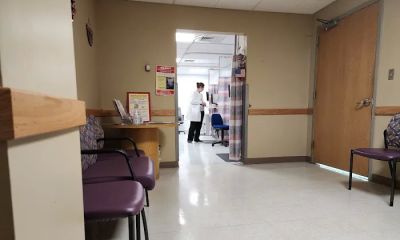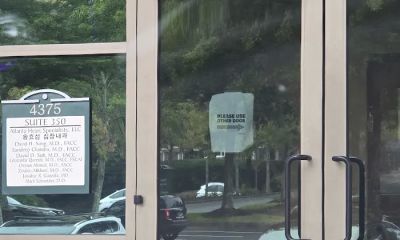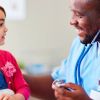Strategies for Quitting Smoking to Reduce Heart Disease Risk
How to Quit Smoking and Reduce Your Risk of Heart Disease
- Why Smoking Increases Heart Disease Risk
- Understanding Your Addiction and Triggers
- Top Strategies for Quitting Smoking
- Psychological Support for Smoking Cessation
- Maintaining a Smoke-Free Life After Quitting
Quitting smoking is one of the most significant steps you can take to reduce your risk of heart disease. As someone who has struggled with smoking in the past, I can understand the challenges involved. However, the rewards of quitting are worth the effort. Smoking is a leading cause of heart disease, and by quitting, you can dramatically lower your risk of developing heart problems. In this article, I’ll walk you through effective strategies for quitting smoking, how these strategies can help you protect your heart, and provide some insights from personal experience and research.

1. Why Smoking Increases Heart Disease Risk
It’s no secret that smoking is harmful to our health, but many people don’t realize the significant impact it has on the heart. Smoking contributes to heart disease in multiple ways. The chemicals in cigarette smoke damage the blood vessels, raise blood pressure, and reduce the oxygen supply to the heart. This not only increases the chances of developing coronary artery disease but also contributes to plaque buildup in the arteries, which can lead to heart attacks and strokes.
From my personal experience and talking to others who have quit, the risks associated with smoking are clear. It’s not just the immediate dangers, but also the long-term effects that take a toll on your heart health. This makes quitting smoking one of the best choices you can make to lower your risk of heart disease.
Atlanta Heart Specialists
atlanta heart specialists
4375 Johns Creek Pkwy #350, Suwanee, GA 30024, USA

2. Understanding Your Addiction and Triggers
Before diving into strategies for quitting smoking, it's important to understand your addiction and triggers. Smoking is not just a physical addiction to nicotine; it's also a behavioral and psychological habit. Over time, smoking becomes associated with certain situations—like taking a break at work, socializing, or dealing with stress. Understanding these triggers is a crucial first step in breaking the cycle of smoking.
One of the key things that helped me when I decided to quit was identifying the moments when I felt the urge to smoke. For some, it’s the morning coffee ritual or after a meal. Recognizing these moments allows you to prepare alternative coping strategies, such as chewing gum, drinking water, or practicing deep breathing exercises.
3. Top Strategies for Quitting Smoking
Now, let’s look at some effective strategies for quitting smoking. Over the years, researchers and health professionals have developed various methods to help individuals quit. I’ve found that combining several strategies works best for lasting success.
3.1. Nicotine Replacement Therapy (NRT)
Nicotine Replacement Therapy (NRT) is one of the most commonly recommended methods for quitting smoking. NRT works by providing a controlled, lower dose of nicotine through patches, gums, lozenges, or nasal sprays. This helps reduce withdrawal symptoms and cravings, making it easier to quit. When I quit smoking, I used nicotine gum, which helped me manage cravings and stay smoke-free.
3.2. Prescription Medications
Prescription medications such as varenicline (Chantix) and bupropion (Zyban) are also effective for helping people quit smoking. These medications work by reducing cravings and the pleasure you get from smoking. If you're serious about quitting, I recommend discussing these options with your healthcare provider to see if they are a good fit for you.
3.3. Behavioral Therapy
In addition to medications and nicotine replacement, behavioral therapy is highly effective in helping individuals quit smoking. This form of therapy helps you identify the underlying psychological triggers that lead you to smoke and teaches you techniques to change your behavior. I personally found cognitive behavioral therapy (CBT) helpful in addressing my habits and finding new coping mechanisms.
3.4. Support Groups and Online Communities
Support plays a critical role in quitting smoking. Many people, including myself, found strength in joining support groups or online communities. Connecting with others who are going through the same journey can provide motivation, encouragement, and accountability. There are numerous smoking cessation programs available, and finding one that fits your needs can make a significant difference in your success rate.
4. Psychological Support for Smoking Cessation
Quitting smoking is not just about physical addiction; it’s also about mental strength and resilience. Psychological support can help you navigate the emotional challenges that come with quitting. In my case, therapy and mindfulness practices were essential for dealing with stress and anxiety, which often led to cravings.
It’s important to remind yourself why you’re quitting. Whether it’s for your heart health, family, or simply to feel better, having a clear motivation can keep you focused during tough times. Journaling, meditation, and relaxation exercises are great tools to help manage emotions and keep your mind on the goal.
5. Maintaining a Smoke-Free Life After Quitting
Once you’ve successfully quit smoking, the real work begins: maintaining a smoke-free life. The first few weeks are the toughest, but once you’ve passed that hurdle, it gets easier. To help ensure long-term success, I recommend continuing with some of the strategies that worked for you during the quitting process.
Additionally, staying physically active and maintaining a healthy lifestyle are key to avoiding relapse. Exercise not only improves your physical health but also helps manage stress and curb the urge to smoke. Staying connected to your support system can also provide continued motivation and encouragement.
More Heart Doctor Near Me
Dr. Puneet Sahgal, MD
75 Main St, Sayreville, NJ 08872, USA

Rahul Sharma, MD
13460 N 94th Dr suite j-1, Peoria, AZ 85381, USA

Saint Vincent Hospital
123 Summer St, Worcester, MA 01608, USA

David Goldstein, DO
510 Hicksville Rd, Massapequa, NY 11758, USA

Cynthia Chin, MD
2 Longview Ave #500, White Plains, NY 10601, USA

Justin Blasberg, MD, MPH
6 Devine St, North Haven, CT 06473, USA

Related Hot
Recommended

atlantic cardiology group mendham nj
8 Tempe Wick Rd, Mendham, NJ 07945, USA

heart of virginia cardiology
501 Sunset Ln, Culpeper, VA 22701, USA

dr howard cardiologist
120 Stone Bridge Pkwy Suite 110, Woodstock, GA 30189, USA

san antonio hospital rancho cucamonga ca
999 San Bernardino Rd, Upland, CA 91786, USA

dr parham
1245 Wilshire Blvd Ste 406, Los Angeles, CA 90017, USA

chicago cardiology institute oak park
7035 W North Ave, Oak Park, IL 60302, USA
Popular Searches
Popular blog









Deborah Heart and Lung Center
deborah heart and lung center
200 Trenton Rd, Browns Mills, NJ 08015, USA